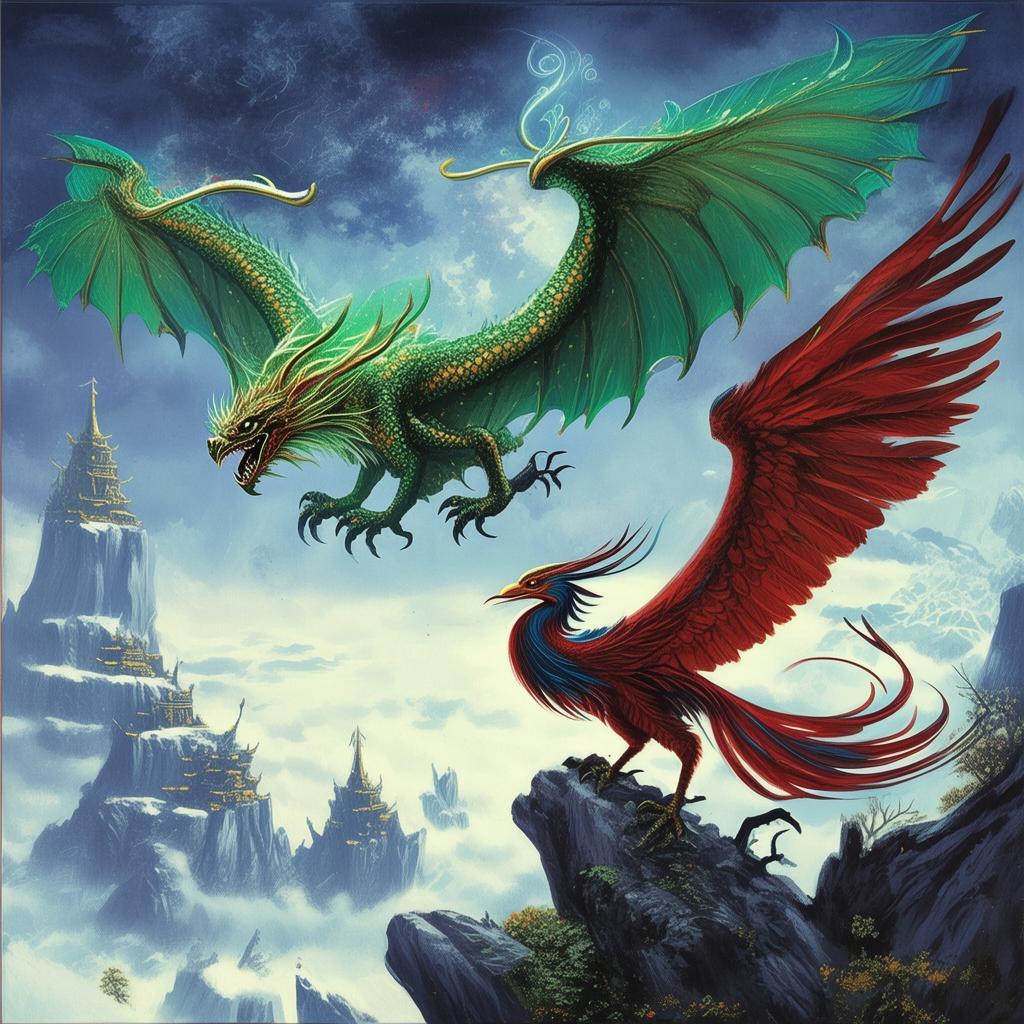The Labyrinth of the Nine Heavens: A Shan Hai Jing Tale
In the heart of the ancient Chinese empire, there lay a tome of boundless wisdom and mystery known as the Shan Hai Jing. This sacred text chronicled the lands and creatures of a world beyond the veil of the known, a place where mountains reached the heavens and dragons roamed the earth. It was said that those who could unravel the secrets within would wield immense power, but also face the greatest of dangers.
Amidst the bustling streets of the imperial capital, there lived a young scribe named Liang. His eyes, though filled with curiosity, had seen the world of the Shan Hai Jing only in the pages of his beloved texts. Yet, his fate was about to intertwine with the very essence of the mystical.
One moonlit night, as the silver glow bathed the ancient city in a serene glow, Liang received a cryptic message. It was a scroll, its ink still warm, that spoke of a labyrinth hidden within the mountains that bordered the realm of the heavens. The scroll read, "The Dragon's Labyrinth, where the celestial powers are entwined, holds the secrets of the Shan Hai Jing. Seek it, and you shall find the answers to the universe's mysteries."
With little more than a scroll and a lantern, Liang set out on his journey. The labyrinth, as he was told, was not merely a physical place but a metaphor for the human heart, a journey of self-discovery and enlightenment. As he ventured deeper into the mountains, the landscape transformed into a surreal tapestry of floating islands and swirling clouds.
Liang encountered creatures of legend: the nine-tailed fox, a being of cunning and trickery; the phoenix, a bird of fire and rebirth; and the dragon, a guardian of ancient knowledge. Each creature posed a riddle, a test of Liang's resolve and wisdom. He spoke with the fox, whose eyes glowed with the fire of the cosmos, and the phoenix, whose feathers shimmered with the light of the sun. With each encounter, he pieced together the fragments of a greater truth.

The labyrinth's core was a chamber of mirrors, each reflecting the face of Liang's past, present, and future. In these reflections, he saw his own failures and triumphs, his deepest fears and greatest hopes. It was within this chamber that the true power of the Shan Hai Jing was revealed. The text was not just a collection of stories but a guide to harnessing the celestial powers that lay dormant within each soul.
As Liang delved deeper into the labyrinth, he discovered that the true path to unlocking the Shan Hai Jing's secrets was not through the labyrinth itself, but through his own heart. It was here that he faced his greatest challenge: to confront his own mortality and the knowledge that the power he sought could either save or destroy the world.
In the end, Liang realized that the true magic of the Shan Hai Jing was not in the words or the creatures, but in the journey itself. The labyrinth was a mirror of his soul, and the secrets he sought were within him all along. With a newfound sense of clarity and purpose, Liang emerged from the labyrinth, not as a scribe, but as a sage.
The story of Liang's journey spread like wildfire through the ancient Chinese empire, inspiring generations to seek their own truths and embrace the mysteries of the Shan Hai Jing. And so, the Dragon's Labyrinth became a legend, a place where the path to enlightenment was evermore elusive and evermore sought after.
✨ Original Statement ✨
All articles published on this website (including but not limited to text, images, videos, and other content) are original or authorized for reposting and are protected by relevant laws. Without the explicit written permission of this website, no individual or organization may copy, modify, repost, or use the content for commercial purposes.
If you need to quote or cooperate, please contact this site for authorization. We reserve the right to pursue legal responsibility for any unauthorized use.
Hereby declared.









